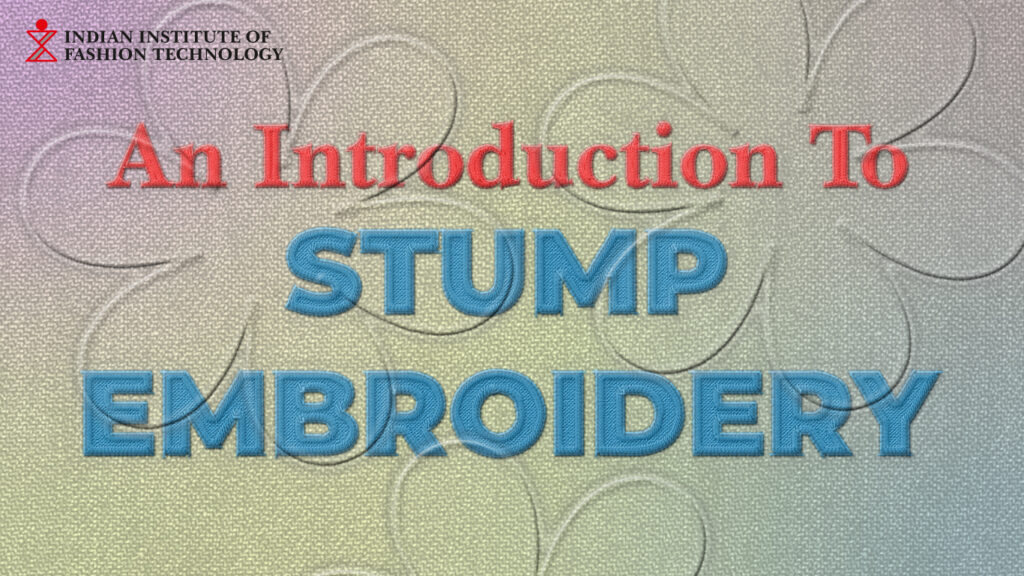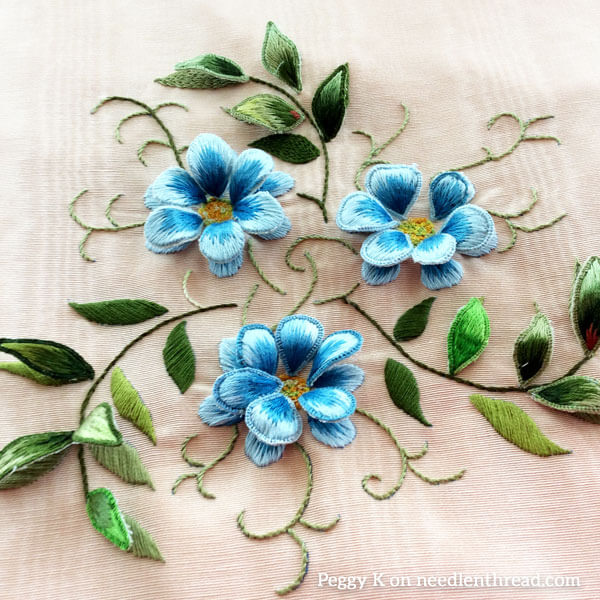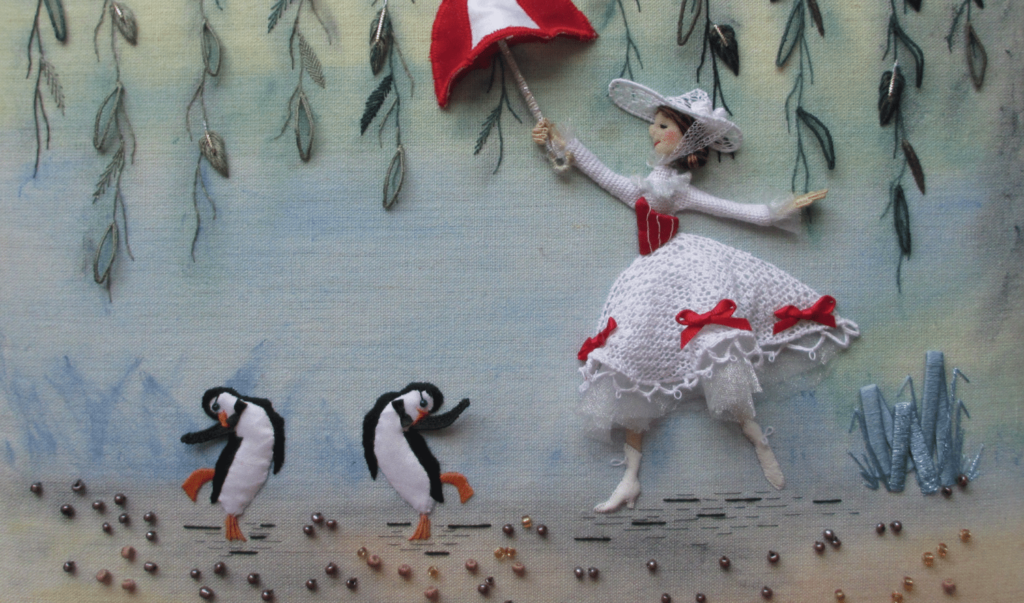
Stump Work Embroidery – formerly called raised Embroidery during the 17th century might give you a perfect visual of what it might be. It was popular in England from the 12th century to the 18th century when, for some reason, it fell out of fashion.
There are various techniques involved in Stump Embroidery Work, and most of them seem easy, but they do demand an immense amount of patience & a lot of practice.
If you are entirely a novice in Embroidery or Stump Work, in particular, you are at the right spot. In this post, we will try and understand what Stump Work Embroidery is and the various techniques involved in Stump Work Embroidery.
Before we get started, here is a small suggestion; if you are looking to get started in Embroidery, I suggest you start small with simplistic designs. Once you’ve mastered the basics, you can move on to more complex projects. Also, if you are passionate about it & the aspect of fashion designing, you can check out our various Fashion Designing courses.
What is Stump Embroidery?

Stump embroidery is an age-old & traditional form of needlework. It was generally done using black thread and white fabric background. But, in today’s time, you can see the Stump Embroidery work on an array of materials in a myriad of colors. It gives a literal and proverbial depth to the material and the design.
Stump Embroidery is a traditional embroidery technique that uses pieces of fabric to create intricate & beautiful designs on pieces of fabric. The result is often beautiful and complex patterns. Though most of the Embroidery work has been taken over by Machines, Stumpwork techniques do make hand embroidery quite remarkable.
The areas to be embroidered are outlined with a contrasting thread before the Embroidery begins. Stump embroidery can be used to make anything from clothing and linens to napkins and candlewick
How to choose Stitches & Colors for your Stump Embroidery?

How do you decide which stitches work well in a piece of stump embroidery? How many colors should I use in my stump embroidery project?
There’s no right or wrong answer when it comes to choosing stitches for stump embroidery. It really depends on what you’re looking to achieve with your project and what type of stitches you feel comfortable using.
I know; It becomes even harder to choose when there isn’t a right or wrong answer. That is why here are a few tips for you to help your decision easier.
- The first thing you need to do is think about the kind of effect you want to create; it would be even better if you could try to visualize what kind of effect you are trying to achieve.
- Choose stitches that will create the desired effect, whether that be texture, dimension, or just a pretty design. Some great examples of stitches for stump embroidery include:
- Counted cross-stitch
- Lazy daisy stitch
- Tent stitch
- Satin stitch
- Buttonhole stitch
- French knots
- Keep the number of colors you use to a minimum.
- If you’re using multiple colors, try not to have more than two colors used in a single area of your design. This will help the texture of the stitches blend more seamlessly together.
- Choose stitches that work well with how you plan to finish your piece.
What supplies would you need to get started with Stump Embroidery:
If it’s the materials that are holding you off from hopping onto the hobby of Stump Work, well, that is not a great reason since the materials you would need are pretty basic and kind of light on your pocket as well.
Here is a list of materials that you would need to get started.
- Embroidery floss in a variety of colors
- Embroidery hoop
- Fabric (cotton, linen, silk, felt, wool)
- Scissors
- Needle
Various Techniques Used in Stump Embroidery:
There are several techniques used in Stump Embroidery and most of them might not even be common across places. In a way, I don’t think it would be a stretch to say that the techniques are only limited by your imagination. Think of it as a design form where there are rules, but they can be bent in any way that we want to make the final design look beautiful. But, in order to bend the rules, you need to know the rules and hence here are some techniques that are commonly used in Stump Embroidery.
- Stitching over areas padded with felt or other stitches.
- Using slips and lightly stuffing them.
- Covering wooden and glass beads with thread.
- Using detached shapes.
- You can also make forms with little pieces of felt and cover them with stitches.
You can mix and match any of these techniques or choose from a variety of techniques.
Conclusion:
Stump Embroidery is a fantastic hobby, and it can be done in a variety of ways. For the beginner, it is best to start with a cross-stitch. There are lots of patterns available for beginners, and it’s not that difficult once you get the hang of it. For those who want to take their time and enjoy the process, stump embroidery might be just what you need.
Stump Embroidery is also a great & creative way of recycling fabrics. That way you can build your hobby while doing your bit for the environment. It’s a win-win for both you and nature. Do think about it and let me know your thoughts in the comments section below.
Has this article convinced you to be a Fashion Designer? Indian Institute of Technology can help you out with that. Not just becoming a Fashion Designer part but getting the job part as well. IIFT has had excellent results in terms of Placements and is considered one of the best Fashion Designing colleges in Bangalore. You can check out more details about the courses we offer below.
Fashion Designing Courses offered by IIFT:
- Diploma in Fashion Design & Boutique Management
- Diploma in Fashion Communication & Journalism
- BSc in Fashion & Apparel Design
- Masters in Fashion Management
- Pattern Making & Draping (Certification Course)
- Diploma in Fashion Designing (Weekend Program)
Or you can just click on that yellow Enquire Now button on the top right corner and fill up the form. We will help you out with the whole process.
